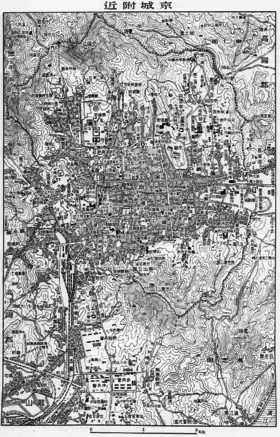Keijō
Keijō, or Gyeongseong, was an administrative district of Chōsen that corresponds to the present Seoul, the capital of South Korea.[1]
| Keijō | |
|---|---|
 | |
| Japanese name | |
| Kanji | 京城府 |
| Hiragana | けいじょうふ |
| Romanization | Keijō-fu |
| Korean name | |
| Hangul | 경성부, 게이조부 |
| Hanja | 京城府 |
| Revised Romanization | Gyeongseong-bu, Geijo-bu |
| McCune–Reischauer | Kyŏngsŏng-bu, Keijo-pu |

Map of Keijō circa 1930

Namdaemun Street under Japanese rule
Honmachi
| Honmachi | |
|---|---|
 | |
| Japanese name | |
| Kanji | 本町 |
| Hiragana | ほんまち |
| Romanization | Hommachi |
| Korean name | |
| Hangul | 혼마치 |
| Hanja | 本町 |
| Revised Romanization | Honmachi |
| McCune–Reischauer | Honmach'i |
The central district of Gyeongseong was Honmachi, present-day Chungmu-ro.
See also
References
This article is issued from Wikipedia. The text is licensed under Creative Commons - Attribution - Sharealike. Additional terms may apply for the media files.